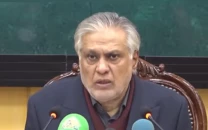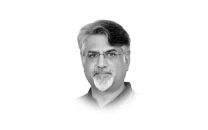Exiled ambitions
We export dreams but if we do not import hope, we will sow despair

Each passing year, a resplendent tide of youthful promise ebbs silently from the soil of our beloved homeland, an exodus of dreams adrift, seeking sanctuary upon distant and foreign shores. Nearly one in every ten of our sons and daughters between the tender years of fifteen and twenty-four, languish in a state of listless idleness, unclaimed by any craft, unanchored to any meaningful pursuit.
In 2024, this grievous figure ascended to 9.86%, a disquieting rise from 9.71% the preceding annum, and nearly twice the long-established norm of 4.45%. These are not merely the cold digits of statistical record; they are the silent lament of squandered potential, the forsaken promise of hands unengaged and spirits unfulfilled.
Among degree holders, the void is starker still: an estimated 31% of educated youth find no employment, with female unemployment soaring above 50% in some surveys. These figures paint a portrait of a nation unable to absorb its educated offspring, forcing them to wander abroad in search of opportunity. In 2024 alone, over 727,000 Pakistanis sought overseas employment, half of them unskilled, one third semi skilled. The brain drain now ferries away not just hands, but minds.
What becomes of a land that educates its people only to witness their departure? We are draining our collective intellect while sending home remittances, palliative in the short term, yet insufficient to replenish our lost reservoirs of talent. This diaspora bolsters GDP abroad while impoverishing our domestic possibilities. It is a cruel irony that the more we invest in education, the more our brightest choose to leave, unfulfilled by a homeland ill prepared to receive them.
The causes are manifold: a mismatch between academic training and market needs; low wages that fail to dignify effort; a paucity of industries that could absorb skill; and a sense of stagnation born of governance that favours hierarchy over creativity. We breed thinkers only to stifle them.
To stem this outflow of promise, Pakistan must mount a renaissance of opportunity rooted in genuine reform. First, education must be redesigned: curricula aligned with industry, vocational training woven into university life, apprenticeships integrated into learning. Let our young emerge not just with degrees, but with skills sought by employers.
Second, we must revive enterprise. Public trust is won when governance enables innovation rather than suppressing it beneath bureaucracy. When regulatory barriers fall and access to credit flows, entrepreneurship flourishes. And when small businesses thrive, jobs follow.
Third, the state must offer incentives: tax relief for startups that hire local youth, subsidies for firms that invest in research and development, mentoring programmes linking graduates to professionals. Our diaspora can play a vital part by investing, advising, even returning to teach and lead. We must build bridges, not walls.
Fourth, dignity in wage must be restored. Let us ensure that public sector pay scales are competitive, that private employers are held to fair labour standards, and that wages reflect both effort and education. Without dignity, no nation can retain its most precious asset, its youth.
Finally, let us foster civic faith. When merit once again becomes the currency of success, confidence blooms. Young Pakistanis must feel that this land is their rightful stage, that their voices matter and their dreams can take root here.
A nation that exports its youth's aspirations in place of nourishing them at home will find its future frayed at the edges. We export dreams but if we do not import hope, we will sow despair. Let us, therefore, resolve to cultivate opportunity, restore purpose, and reclaim the brilliance of our young, before their departure becomes our permanent loss.















COMMENTS
Comments are moderated and generally will be posted if they are on-topic and not abusive.
For more information, please see our Comments FAQ